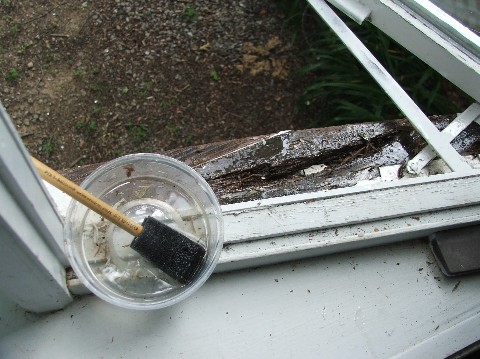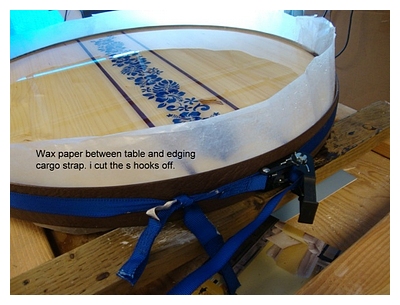

<meta name="googlebot" content="noodp" />
<meta name="slurp" content="noydir" />
<meta name="msnbot" content="noodp" />
<META NAME="GENERATOR" Content="Visual Page 2.0 for Windows">
<meta http-equiv="reply-to" content="pauloman555@yahoo.com"/>
<meta name="contactname" content="Professor E.Poxy"/>
<meta name="contactorganization" content="progressive epoxy polymers, Inc."/>
<meta name="contactstreetaddress1" content="48 wildwood."/>
<meta name="contactcity" content="Pittsfield"/>
<meta name="contactstate" content="New Hampshire"/>
<meta name="contactzipcode" content="03263"/>
<meta name="contactphonenumber" content="603.435.7199"/>
<meta http-equiv="content-language" content="en-us">
Two Part Epoxy Resin INFO SITE
Learn more about 2 part epoxy before you buy
GOOGLE SITE SEARCH - Click here
v
Learn more about 2 part epoxies before you buy
| Homepage | Epoxy Paint | Garage Coatings | Epoxy Resin Systems | Clear Marine Epoxy | Questions and Help |
EPOXY ISSUES AND CONCERNS
Many maintenance professionals have an uneasy relationship with the coatings (better know as paint to anyone over 35 years old) they are responsible for maintaining. Recoating (repainting) is at best an expensive, disruptive nuisance. When coatings fail prematurely the expense and work factors are compounded and finger pointing runs amuck.
Why do coatings fail? Too many technical articles take the issue down to the molecular level, providing answers that leave many readers still in the dark. Too often the blame and responsibility is placed on poorly explained surface preparation which also fails to provide suitable answers. Correct surface preparation is critical to coating success, but coatings can still fail despite the best preparation.
Below are eight common, useable reasons why coatings fail, as well as possible cures to these problems and a very Subjective Frequency Rating for each failure type.
Around concrete surfaces, such as floors, walls and structures, water in the concrete is a major cause for premature coating failures. Concrete tends to hold and retain water for a much longer period than most people can or will wait prior to coating. Floors can have dry areas and damp areas, including some damp areas that never dry out. Touching the surface to test for dryness can be a misleading method for determining moisture.
High humidity can be as detrimental as moisture. Many coating products do not recommend applications when humidity exceed 75 or 85 percent. In some places, such as along the Gulf Coast, these humidity levels are the daily norms. Many locations can also expect frequent thunderstorms, showers, or rainy periods during certain times of the year. A little bit of rain every day will keep most concrete structures from every completely drying out.
Some facilities, like docks, piers, or power plants are either always wet submerged or else cannot spare the time to permit even marginal dry-out time when recoating is necessary. So what is the solution to the wet surface problem? There is a new generation of solvent-free epoxy coatings that can actually be applied underwater. With these coatings the attractive forces between the solid surfaces and the epoxy are greater than the attractive forces between the surface and the water. The result is the displacement of the water by the epoxy and a successfully bonded coating underwater.

The adhesion of a coating to a surface is only as good as the adhesion of any other coating separating the two. A layer of dust, dirt, or grease is not going to aid coating adhesion. I have inspected freshly applied, peeling warehouse floor coatings where the underside of the coating was much dirtier than the top of the coating. Is there any wonder that the coating failed to bond to the floor?
As new regulations nudge us toward the use of low solvent, low VOC (volatile organic compounds) coatings, the dust problem becomes more significant. Solvents can sometimes partially dissolve, soak through or around surface contaminants, or help the coating soak into the substrate. Taking the solvents out of the coating means those surface contaminants are not going to be mitigated in any way. The solution is to obtain a clean surface prior to coating.
Sunlight (UV), heat, and chemicals will slowly, or quickly, breakdown any coating. Selecting the proper coating is obviously the solution, although eventually nature wins anyway. Chemical and UV resistance varies greatly between coating products, so always check your coating prior to application.

It has recently been discovered that corrosion and coating failure often begin on the underside of the coating, especially on steel surfaces. Sandblasting and grinding can prepare a surface to what is called white metal' but it cannot remove invisible salt/ion deposits that become corrosion cells' attacking the metal under the coating. The best solution appears to be switching from sandblasting to water jetting (hydro-blasting). The water jet action can remove all residual coatings as well as any invisible surface salts.
As mentioned above, regulations are forcing out the use of solvents (VOCs) in coatings. While solvents do have many positive advantages, they also have some negative features that help cause coating failures. Everyone has seen alligator hide' ridges on painted surfaces, especially in places where the coating is extra thick. These ridges are caused by trapped solvents within the coating. In these thick' areas the surface of the coating dried too quickly before the underlying coating could release its solvent and dry. The result is a trapped pocket of un-dried coating. The ridges are formed because as the solvent leaves the top layer of coating, that coating shrinks. That is also why when you paint over holes and cracks those voids tend to re-appear as the solvent-rich coating dries. Solvents can also lift oils out of underlying surfaces, or partially soften what were well bonded residual coatings, either of which can cause the new topcoat to fail. Do you realize that when you purchase a coating that is 25% solvent, you are really only getting 3 quarts of coating instead of a full four quarts? Apply 12 mils of this coating to a surface and when it dries you will only have 9 mils of coating. Will 9 mils be adequate for the job at hand?
There is very little you can do to solve this problem. Solvent free coatings are becoming the norm. You will be using them!
Many coatings will fail because they cannot handle the expansion/contraction (or movement) of the underlying surface, or they crack when struck. Brittleness is measured in terms of elongation. Brittle phenolic epoxies traditionally have elongations of only 2-3 percent. Once a coating cracks, even a tiny micro fracture, that crack becomes a pathway for moisture and corrosion. It is the beginning of failure for the coating. Look for coatings that have good elongation. Some products, like the wet surface epoxies mentioned above, are reinforced with Kelvar (tm) micro-fibers. These fibers act like rip-stop nylon or rebar in concrete. They help keep tiny micro fractures in the coating from spreading and growing.
Thin coatings, coatings with good gelling' properties (important for hanging' on vertical surfaces), and high solvents (which shrink as they dry) can leave behind pinholes' or tiny areas of non-coverage. The solution to pinholes is multiple coats. Even if one coat will cover, in critical situations always apply two or more coats, preferably in contrasting colors so that there is visual confirmation of uniform coverage.

Coatings fail for a number of reasons, the most common being moisture, dirt and contaminants, and natural breakdown and weathering. Careful selection of your coating, an understanding the possible causes of failure in your particular situation, and careful surface preparation will all significantly reduce the occurrence of coating failures.
Interested in a thick, clear epoxy Table Top or Bar Top?
Visit this Pour-On Epoxy Link Page.
**
Epoxy coated stone pool (yard) deck surfaces:
begin here: Pebble Decks.
need to learn more about epoxies??
--- visit these third party sites ---
(EVERYTHING-EPOXY.INFO --- Intro to basic epoxy resin types)
also visit the EPOXY GURU
|
|
Google Epoxy Specific Search |

Site Co-Sponsor -
PEP .
DID YOU KNOW...
Epoxy coatings are used because of their
outstanding chemical resistance, durability, low porosity and strong bond
strength.
Epoxies consist of a ‘base' and a ‘curing'
agent. The two components are mixed in a certain ratio. A chemical reaction
occurs between the two parts generating heat (exotherm) and hardening the
mixture into an inert, hard ‘plastic'.
Epoxies yellow, chalk (or more commonly least lose their gloss), in direct
sunlight (UV). The yellowing can be a real problem. For pigmented epoxies
select colors that are dark or contain a lot of yellow (such as green). Even
clear epoxies will yellow and cloud up. Often epoxies are top coated with
latex or urethanes that will retain their color and attractive gloss. This
is particularly true if color coding or matching company colors is
important.
Epoxies will harden in minutes or hours, but complete cure (hardening) will
generally take several days. Most epoxies will be suitably hard within a day
or so, but may require more time to harden before the coating can be sanded.
By their nature, epoxies are hard and brittle. Additives can be added to
epoxies that make them less brittle, but generally at the loss or reduction
of other positive epoxy properties such as chemical resistance.
Other clues of cheap epoxies include ‘induction time' (after mixing the two
components the mixture must sit for several minutes to ‘self cook' before
being applied).
The best time to recoat epoxy is within about 48 hours after the initial
coat. Because epoxies take days to reach full cure, a second coat applied
shortly after the first coat will partially fuse to the first coat rather
than forming a simple mechanical bond.
End users can thicken epoxy with many things, Tiny glass spheres, known as
micro-spheres or micro-balloons are commonly used. Besides thickening, their
crushable nature makes sanding the hardened epoxy easier. On the downside,
they work like tiny ball bearings, resulting is sagging and slumping.
Another thickener is fumed silica (a common brand name is Cabosil (tm))
which looks like fake snow. About 2 parts fumed silica with one part epoxy
will produce a mixture similar in texture and thickness to petroleum jelly.
Micro-spheres and fumed silica can be combined together.
Fisheyes are areas on a painted surface where the coating literally pulls
away for the substrate leaving a coatingless void or fisheye. Often fisheyes
are caused by surface contaminants such as a bit of silicon, wax, or oil. I
have also seen them on clean plywood where epoxies paints have been used as
sealers and the problem might be due to uneven saturation (soaking-in) of
the epoxy into the wood. Surface tension plays a big part in fisheyeing.
There are some additives that can be mixed into the epoxy that will reduce
surface tension. Likewise, on wood, applying several coats of solvent
thinned epoxy, instead of one coat of unthinned epoxy, seems to work well.
Applying a thick coat of epoxy over a contaminated fisheye surface will bury
the fisheye but expect the coating to peel away in the future. As a rule of
thumb, always suspect some sort of surface contamination as the primary
cause of fisheyeing.
Adding a bit of solvent to a solvent based or solvent-free epoxy is
something that most manufacturers would not officially approve of and
something that might not work with all epoxies. However, it can be done
(unofficially) with the epoxies I deal with. Adding solvent to these epoxies
will: 1) thin them out; 2) increase pot life; 3) allows them to flow off the
brush/roller a bit more smoothly; and 4) perhaps allows them to ‘soak-in',
penetrate, or may be soften, the substrate just a little bit. Not change is
visible in the epoxy unless 12% or greater solvent is added. With that
amount of solvent, the epoxies no longer cure with a glossy finish.
It is best to use epoxies with a mix ratio close to 1 to 1 as opposed to
something 4-1, 5-1, etc. because errors in the mix ratios can be more
pronounced with the latter. That said, no matter what the mix ratio is, some
epoxies are more forgiving of mix ratio errors than others. One ‘trick' of
epoxy vendors with odd or very sensitive mix ratios is to sell calibrated
pumps that disperse the epoxy components in exact amounts.
How Thick? How thick should your coating be? Economics play a major role in determining how much coating to apply. One U.S. gallon contains 231 cubic inches. That's only 1.6 cubic square feet of surface at one inch thick and that's also assuming a solvent-free product. If the product is 25% VOC (i.e. 25% solvent) then dry thickness/coverage will be 25% less. Again, assuming a 1/4 inch thick coating (250 mils) maximum coverage will still be only 6.4 square feet per gallon. A solvent-free (100% solids) epoxy coating applied at 16 mils will cover 100 square feet per gallon (note: the wall paint in your office is probably 2-4 mils). While thick coatings sound like a good idea, they use so much product that they must be made very cheaply so that coating 1,000 or 10,000 square feet can still be done at a competitive price. A high quality, fairly expensive product with a coverage rate of 100 sq. feet or more per gallon, on the other hand, will have a low enough cost per sq. foot to provide both economy and top quality.
| Homepage | Epoxy Paint | Garage Coatings | Epoxy Resin Systems | Clear Marine Epoxy | Questions and Help |
Search the
EPOXY-ONLY World Wide Web
search engine
for your Epoxy Related Search term
CLICK HERE FOR EPOXY RELATED SEARCHES
Sponsor Links:
the "Epoxy
Guru"
Paul Oman - MS. MBA
A.K.A. “Professor E. Poxy” -- "The Old Goat" -- "Epoxy
Guru"
epoxies since 1994
Member: NACE (National Assoc. of Corrosion Engineers)
Email
The Epoxy Guru, or call him to talk or purchase products mentioned:
Call
Sponsor Links: please support our sponsors!
ONLINE PRODUCT
CATALOGS
PROGRESSIVE EPOXY
POLYMERS, Inc
ONLINE STORE
Purchase Here ------ or CALL 603 435 7199 ------
HOME
PAGE
Marine Catalog
*
table
of contents page for marine catalog section
Section Two
FILLERS THICKENERS ADDITIVES
MASSIVE BOAT HOW TO
- ISSUES -
HELP WEB LINK SITE
Residential /
Commercial / DIY Catalog
*
table
of contents page for residential/commercial catalog section
WEB
EPOXY
FLOOR ISSUES LINKS SITE
--- WEB
EPOXY
REPAIR LINKS SITE
-------
BY SUBJECT
INDEX HELP SITE
top selling favorite
products for your every need
Buy
Talk Chat Support
EMAIL
or
603 435 7199
American manufactured, distributed, and sold epoxies and
coatings.
Your business helps small
American Family Businesses -
Thank You!
*
home
page of marine catalog section (blue background)
Section One
MARINE - CLEAR EPOXIES
Section Three
THICKENED EPOXIES - EPOXY PUTTIES, ETC.
Section Four
EPOXY PAINTS (barrier coats)
Section Five
URETHANES AND NON-EPOXY COATINGS
Section Six
NON-SKID DECK COATINGS
Section Seven
MARINE REPAIR PRODUCTS
Section Eight
MISC. MARINE PRODUCTS
*
home
page of residential/commercial catalog section (brown background)
Section A
EPOXY PAINTS
Section B
FLOOR EPOXIES (regular and non-skid products), SEALERS, ACCESSORIES
Section C
THICKENED EPOXIES - EPOXY PUTTIES, ETC.
Section D
CLEAR EPOXIES
Section E
NON-EPOXY PAINTS COATINGS SEALERS
Section F
MIX-IN ADDITIVES
Section G
OTHER PRODUCTS
Section H
SURFACE PREPARATION PRODUCTS
Section I
MISC. ACCESSORIES
(QUESTIONS, ORDERS, ETC. WE CHECK EMAILS MULTIPLE TIMES EACH DAY AND ON WEEKENDS/HOLIDAYS)
Need More?
Ask the EPOXY GURU
Ask Professor E.Poxy
|
Let's stay connected. It's a win-win situation. Receive our online NEWSLETTER by emailing us your name and email address. |
NOTICE: Legal notices, Terms of Service, warranty information, disclaimers, health warnings, etc. are required reading before using web site, ordering and/or using Products. Any such use and/or ordering, online or by telephone, shall constitute acceptance and knowledge of all such terms.
CLICK HERE to access these terms. Please note: Whenever you purchase from this web site, and with each new purchase, you are granting us full and complete permission to add you to our email newsletter list at our option.
RETURNS: call or email for authorization to return. Returns are subject to a 25% restock fee. Customer pays return shipping and must comply with federal DOT shipping requirement/labeling for hazmat epoxies under penalty of fines and legal action.
###